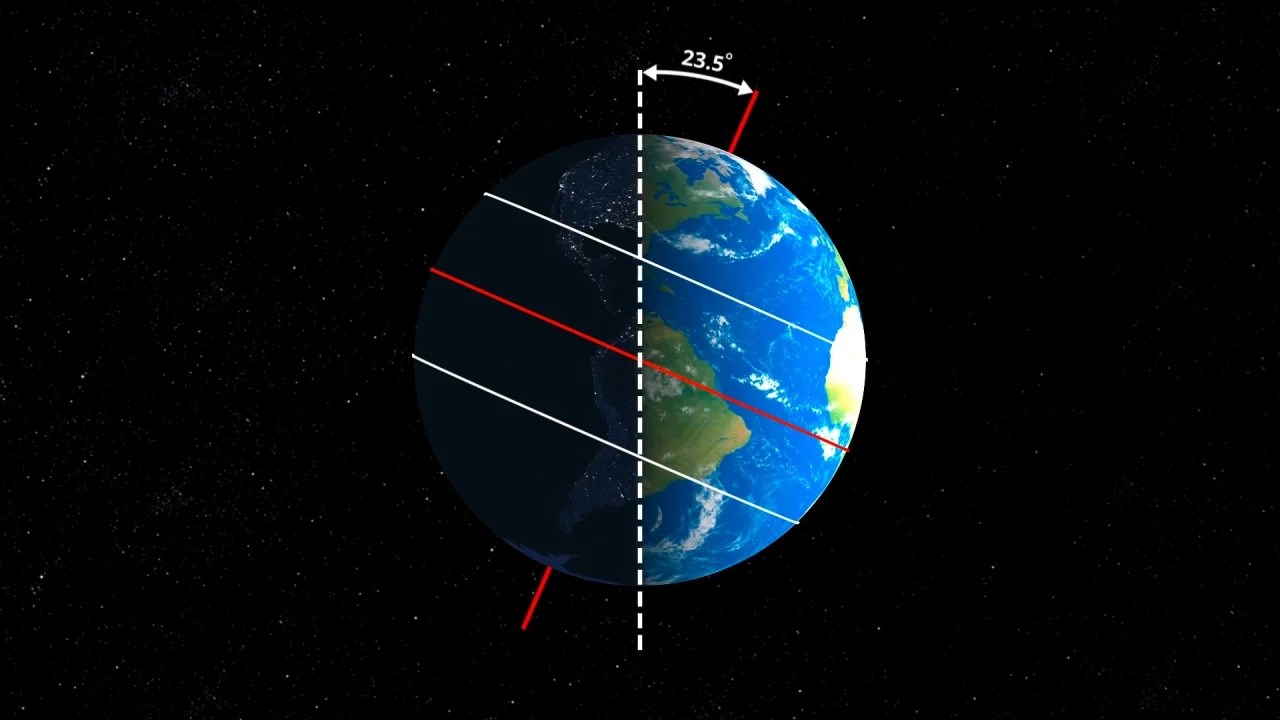About 4.5 billion years ago, a Mars -sized object hit the newly formed planet, and as a result, our planet was bent angled. So, what exactly is the axis inclination? What would have happened if there was no axis tilty?
It is necessary to define the axis before the axis curve. The axis is an invisible line in which an object revolves or turns around. The object can be a smaller, tiny particle or a star with a thousand sun mass than a single atom. In both cases, the axis of an object passes through the mass center or double center. The mass center of an object is a point where the external force affecting the object acts as if the object is located at that point. The Mass Center of the Earth actually changes. The ocean tides slide the mass center, but not enough to root the planet’s axis.
Every planet in our solar system revolves around its own axis. So each planet has a north and south pole. It is called a period of rotation to complete a return around the axis of a planet or another celestial body. The return time of our world around itself is 24 hours or one day.
What is the axis inclination 🌍
 The axis inclination is the angle between the rotating axis of the planet and the orbit plane.
The axis inclination is the angle between the rotating axis of the planet and the orbit plane.The axes of some planets such as Mercury, Venus and Jupiter are almost completely upright or upwards. The axis of the Earth is not perpendicular. There is an axis curve and slope. The axis curve refers to the angle of a planet’s return axis with the orbit plane. The orbit axis of a planet is erected to the plane of attachment or orbit, which surrounds the sun and extends to the edge of the solar system. The axis curve of our world is approximately 23.5 degrees. Because of this inclination, the sun shines from different angles to different latitudes throughout the year. This causes the occurrence of seasons.
Uranus is the planet with the largest axis slope in the solar system. The axis is approximately 98 degrees; Therefore, the North Pole is almost above the equator. Astronomers think that this excessive slope was a result of a collision with a world -sized planet shortly after Uranus was formed billions of years ago.
What is a axial wobble (presression) 🌏
The axis of the Earth looks fixed, but it actually plays very slowly like a rotating top. It takes about 26,000 years to realize the circular motion of the world’s axis. This movement is called axial presression.
The Axis of the Earth helps to determine the North Star, and the axial wobble helps to change it. For example; Currently, the Earth’s axis points to a star named Polaris. Polalaris, which takes its name because it is just above the North Pole, is the current North Star. But Polaris will not always be the North Star. The axis of the Earth is slowly moving away from Polalaris. 13,000 years later, he will point to a new North Star called Vega.
Consequences of the World Axis Beginning 🌐

- The formation of seasons
- Change of sun rays that fall to a point during the year
- The shadow length of the rod planted in a point changes during the year
- The formation of rotations and polar circles
- Different seasons at the same time in the north and southern hemisphere
- Extending and shortening of day and night times
- The occurrence of mathematics climate generations
- Change of sunset clock and location of the sun
What would happen if there was no axis tilty 🤔

- The sun’s rays always come to the equator at a perpendicular angle
- Seasons would not live
- Temperature difference would not occur throughout the year
- The enlightenment would always pass through the poles to the circle
- It would always be equal day and night
- The sunset time and place of the sun would not change
- The angles of the sun’s rays would not change at noon
- They wouldn’t have returns and polar apartments
- It would be less plant and animal species